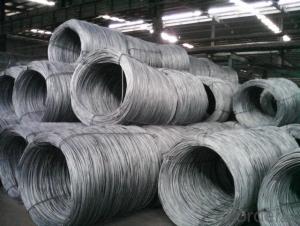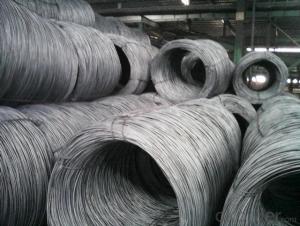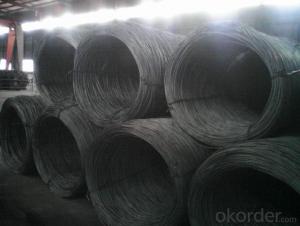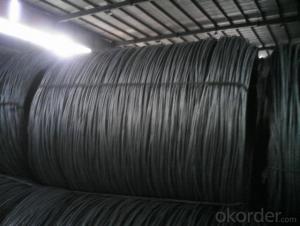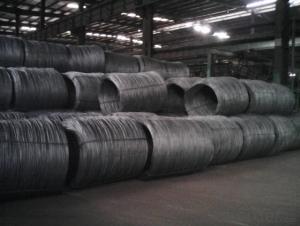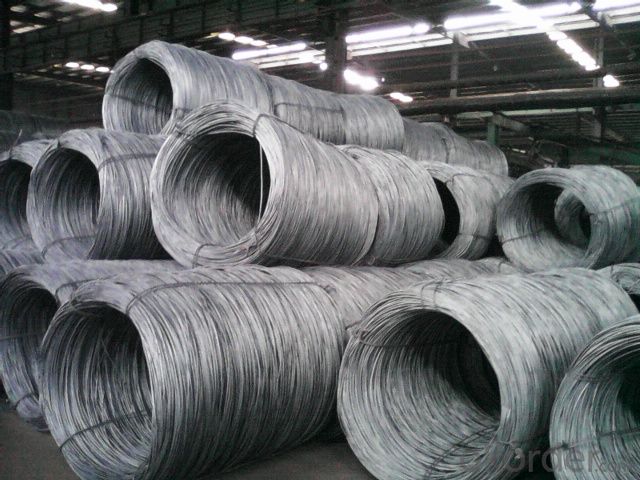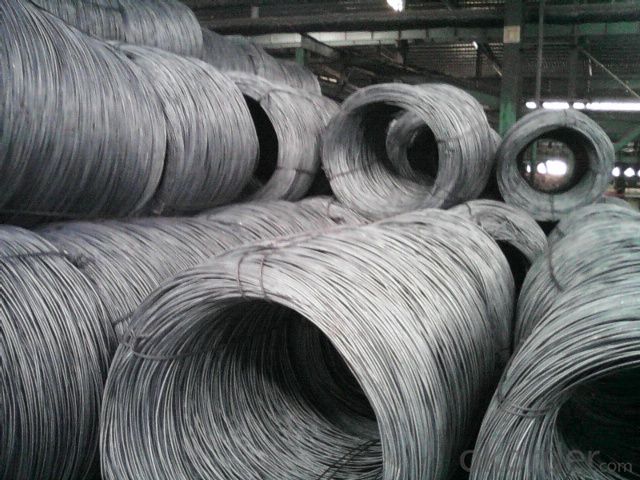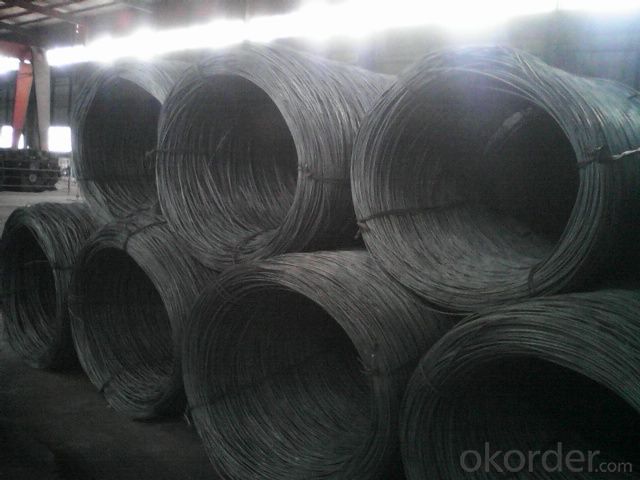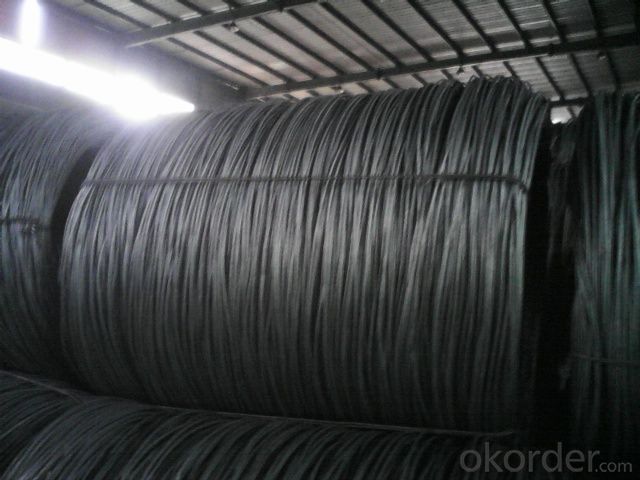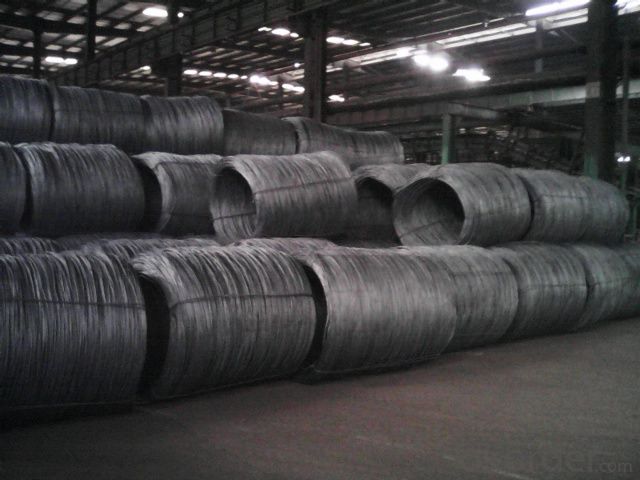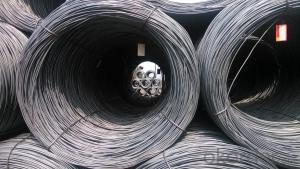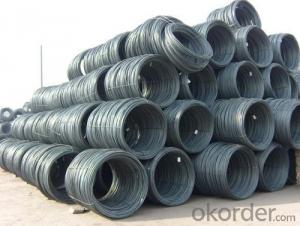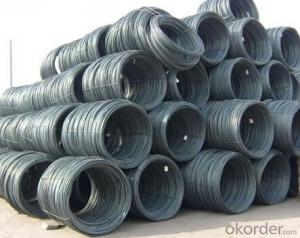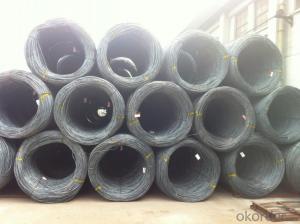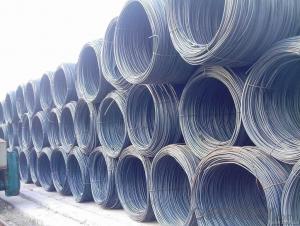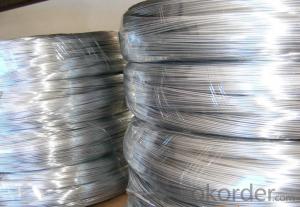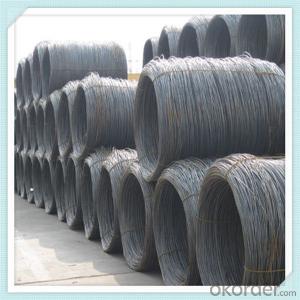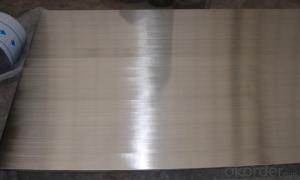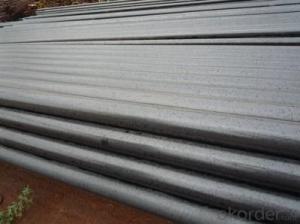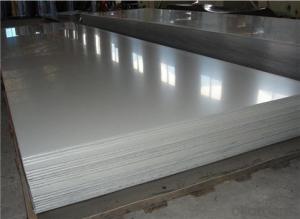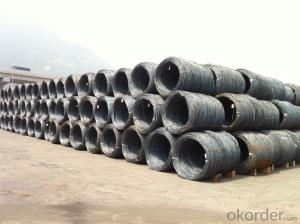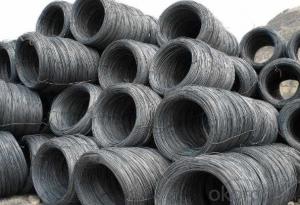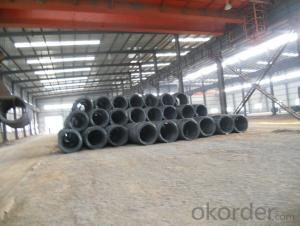Stainless Steel Wire with Grade: SS 200,300,400 series
- Loading Port:
- Tianjin
- Payment Terms:
- TT OR LC
- Min Order Qty:
- 100 m.t.
- Supply Capability:
- 2000 m.t./month
OKorder Service Pledge
OKorder Financial Service
You Might Also Like
Product Description:
OKorder is offering Stainless Steel Wire with Grade: SS 200,300,400 series at great prices with worldwide shipping. Our supplier is a world-class manufacturer of steel, with our products utilized the world over. OKorder annually supplies products to European, North American and Asian markets. We provide quotations within 24 hours of receiving an inquiry and guarantee competitive prices.
Product Applications:
Stainless Steel Wire with Grade: SS 200,300,400 series are ideal for structural applications and are widely used in the construction of buildings and bridges, and the manufacturing, petrochemical, and transportation industries.
Product Advantages:
OKorder's Stainless Steel Wire with Grade: SS 200,300,400 series are durable, strong, and resist corrosion.
Main Product Features:
· Premium quality
· Prompt delivery & seaworthy packing (30 days after receiving deposit)
· Corrosion resistance
· Can be recycled and reused
· Mill test certification
· Professional Service
· Competitive pricing
Product Specifications:
1.Grade: SS 200,300,400 series
2.Dia: 0.1mm-100mm
3.Length:500m-2000m/Reel
4.Surface: Bright
5.Certificate: Fortune 500, SGS, ISO 9001:2008
6.Test: Salt Spray over200 hours
7.MOQ:500kg
8.Delivery: Within 20 days
9.Packing: Reel, wooden box or according to your requirement
10.Payment terms: China Main Port or CIF ANY PORT
11. Application: Tie wire, pins, lashing, forming wire, filters, gaskets, elevators, safety wire, shaped and flat wire, conveyors, jewelry, springs, brush welding, electrical, wire line, craft and many more applications.
Main Grades | C % | Si % | S % | P % | Mn % | Cr % | Ni % | Mo % | Cu % |
S30400 | <0.08 | <0.75 | <0.015 | <0.045 | <2 | 18.05-19 | 8.01--8.25 | <0.6 | |
304H | 0.04-0.1 | <0.75 | <0.015 | <0.045 | <2 | 18.05-19 | 8.01--8.25 | <0.5 | |
304Hc1 | 0.03-0.05 | <0.75 | <0.015 | <0.045 | <2 | 18.05-19 | 8.01-8.25 | 1.2-1.6 | |
304Hc | 0.03-0.05 | <0.75 | <0.015 | <0.045 | <2 | 18.05-19 | 8.01--8.25 | 2-3 | |
304Hc3 | 0.03-0.05 | <0.75 | <0.015 | <0.045 | <2 | 18.05-19 | 8.01--8.25 | 3-3.5 | |
304ES | <0.08 | <0.75 | <0.015 | <0.045 | 2-3 | 16.05-17 | 6.01-6.3 | 1.5-3 | |
304M2 | 0.05-0.08 | <0.75 | <0.015 | <0.045 | 2-3 | 18-18.5 | 7-8.1 | <0.6 | |
304M3 | 0.05-0.08 | <0.75 | <0.015 | <0.045 | 2-3 | 18-18.5 | 8.01-8.25 | <0.6 | |
304L | <0.035 | <0.75 | <0.015 | <0.045 | <2 | 18.05-19 | 8.01--8.25 | <0.6 | |
321 | 0.04-0.08 | <0.75 | <0.015 | <0.045 | <2 | 17-18 | 8.01--8.25 | ||
316L | <0.035 | <0.75 | <0.015 | <0.045 | <2 | 16.05-17 | 10.01--10.35 | 2.01-2.2 | <1 |
316 | 0.04-0.08 | <0.75 | <0.015 | <0.045 | <2 | 16.05-17 | 10.01--10.35 | 2.01-2.2 | <1 |
316LCu | <0.035 | <0.75 | <0.05 | <0.045 | <2 | 16-17 | 10-10.5 | 2-2.25 | |
ER316L | <0.04 | 0.65 | <0.03 | <0.04 | 1.0-2.5 | 18-20 | 11.1-12 | ||
201CU | <0.08 | <0.75 | <0.015 | <0.045 | 8-9.5 | 13.05-14 | 4.01-4.25 | 2-3 | |
D667 | <0.08 | <0.75 | <0.015 | <0.045 | 13-14 | 13-14 | 0.7-1.5 | 1.5-3 | |
D665B | <0.08 | <0.75 | <0.015 | <0.045 | 14-16 | 10.05-11 | <1.2 | 0.5--1.5 | |
202B | 0.1-0.15 | <0.75 | <0.015 | <0.045 | 9-10 | 17.05-18 | 4.5-5 | ||
D669 | 0.08-1.0 | <0.75 | <0.015 | <0.045 | 14.5-16 | 11-12 | <1.2 | 0.5-1.5 | |
200CU | <0.08 | <0.75 | <0.015 | <0.045 | 11-12 | 13-14 | 1-2 | 1.5-2.5 |
FAQ:
Q1: Why buy Materials & Equipment from OKorder.com?
A1: All products offered byOKorder.com are carefully selected from China's most reliable manufacturing enterprises. Through its ISO certifications, OKorder.com adheres to the highest standards and a commitment to supply chain safety and customer satisfaction.
Q2: How do we guarantee the quality of our products?
A2: We have established an advanced quality management system which conducts strict quality tests at every step, from raw materials to the final product. At the same time, we provide extensive follow-up service assurances as required.
Q3: How soon can we receive the product after purchase?
A3: Within three days of placing an order, we will begin production. The specific shipping date is dependent upon international and government factors, but is typically 7 to 10 workdays.
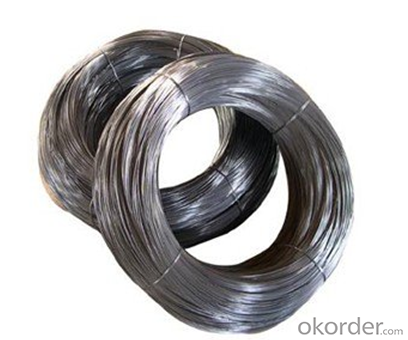
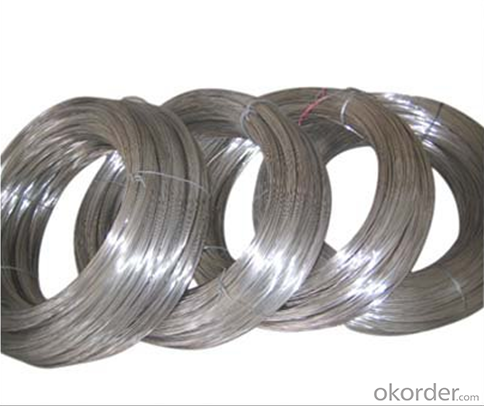
- Q: What are the different sizes and diameters of steel wire rod?
- The sizes and diameters of steel wire rods can vary depending on the specific requirements and applications. However, common sizes range from 5.5mm to 20mm in diameter.
- Q: How is steel wire rod used in the manufacturing of bicycle spokes?
- Steel wire rod is used in the manufacturing of bicycle spokes by being shaped and cut into the desired lengths. These rods are then threaded into the spoke nipples and attached to the bicycle hub and rim, providing strength and stability to the wheel structure.
- Q: How are steel wire rods used in the manufacturing of wire brushes for cleaning purposes?
- Wire brushes for cleaning purposes require steel wire rods as an essential component. These rods are typically crafted from high-quality steel, renowned for its strength, durability, and flexibility. To produce wire brushes, the steel wire rods undergo a series of procedures. Initially, the wire rods are carefully chosen based on their composition and tensile strength. Next, they are fed through a wire drawing machine, which reduces their diameter and elongates their length. This process allows for the creation of slender and lengthy wires, perfect for brush bristles. Once the wires are drawn, they are straightened and cut to the desired length, which may vary depending on the brush type. The straightened wires are then either inserted into a metal ferrule or twisted together to form a bundle, depending on the brush design. The wire bristles are subsequently affixed to a handle or base, which can be crafted from wood, plastic, or metal. This assembly procedure can be performed manually or with the assistance of specialized machinery. The bristles are securely fastened to prevent them from coming loose during use. Steel wire rods are favored for manufacturing wire brushes due to their outstanding cleaning properties. The strength and flexibility of steel enable the bristles to effectively eliminate dirt, grime, and debris from various surfaces. They are suitable for use on a wide range of materials, including metal, wood, and concrete. Wire brushes made from steel wire rods are commonly employed for cleaning tasks such as rust removal, paint stripping, and corrosion elimination from surfaces. They are also utilized in preparing surfaces for painting or welding, cleaning welding joints, and scrubbing hard-to-reach areas. These brushes find applications in industries like automotive, manufacturing, construction, and maintenance. To summarize, steel wire rods are vital in the production of wire brushes for cleaning purposes. Their strength, durability, and flexibility make them ideal for crafting efficient and dependable cleaning tools. Whether it involves rust removal, weld cleaning, or surface scrubbing, wire brushes made from steel wire rods are indispensable in numerous industries and households.
- Q: How does the hardness of steel wire rod vary with different wire drawing processes?
- The hardness of steel wire rod typically increases with different wire drawing processes. As the wire is drawn through smaller and smaller dies, the material is subjected to plastic deformation, which aligns the grain structure and increases the dislocation density. This results in a harder and stronger wire with improved mechanical properties.
- Q: How are steel wire rods used in the manufacturing of piano strings for musical instruments?
- Steel wire rods are used in the manufacturing of piano strings for musical instruments by being drawn through a series of dies to achieve the desired thickness and strength. These wire rods are then wound tightly around a core wire to create the piano string. The high tensile strength of steel wire makes it ideal for withstanding the tension required to produce the desired pitch and resonance in a piano.
- Q: How is the corrosion resistance of steel wire rod determined?
- The corrosion resistance of steel wire rod is determined through various methods and tests. One common method is the salt spray test, also known as the ASTM B117 test. In this test, the steel wire rod is exposed to a controlled environment of salt mist or fog for a specified period of time. The wire rod is then evaluated for signs of corrosion, such as rust or discoloration. Another method used to determine corrosion resistance is the pitting corrosion test. In this test, the steel wire rod is exposed to a corrosive solution, such as a chloride solution, and the formation of pits or localized corrosion is monitored. The severity and extent of pitting corrosion can provide insights into the resistance of the wire rod to corrosive environments. Additionally, electrochemical methods such as the polarization resistance test and electrochemical impedance spectroscopy can be used to assess the corrosion resistance of steel wire rod. These tests involve measuring the electrical response of the wire rod when subjected to an applied voltage or current. By analyzing the resulting data, corrosion rates and potential susceptibility to corrosion can be determined. Other factors that can affect the corrosion resistance of steel wire rod include the composition of the steel alloy, the presence of protective coatings or surface treatments, and environmental conditions such as temperature and humidity. These factors are often considered in conjunction with the aforementioned tests to provide a comprehensive evaluation of the corrosion resistance of steel wire rod.
- Q: How is the steel wire rod market impacted by technological advancements?
- Technological advancements have significantly impacted the steel wire rod market by revolutionizing the manufacturing process, improving product quality, and enhancing operational efficiency. Advanced manufacturing techniques such as automation, robotics, and data analytics have streamlined production, leading to higher productivity and reduced costs. Furthermore, technological advancements in metallurgy and material science have resulted in the development of stronger and more durable wire rods, meeting the evolving demands of various industries. Additionally, innovations in wire rod coatings and surface treatments have expanded the range of applications and improved corrosion resistance. Overall, technological advancements have played a crucial role in shaping the steel wire rod market, driving growth, and enabling manufacturers to stay competitive in a rapidly changing industrial landscape.
- Q: What are the different types of steel wire rod surface defect analysis tools?
- There are various types of tools used for analyzing surface defects in steel wire rods. Some commonly used tools include visual inspection, magnifying glasses or microscopes for close examination, dye penetrant testing to detect cracks or discontinuities, magnetic particle inspection to identify surface or near-surface defects, and ultrasonic testing to assess internal defects. Additionally, advanced technologies such as laser scanning or digital imaging systems are also employed for precise defect analysis.
- Q: How is steel wire rod processed to achieve specific properties?
- Steel wire rod can be processed to achieve specific properties through various methods such as heat treatment, cold working, and alloying. Heat treatment involves subjecting the rod to controlled heating and cooling processes to alter its microstructure and enhance desired properties like strength and ductility. Cold working, on the other hand, involves mechanically deforming the rod at room temperature to increase its strength and hardness. Alloying, which involves adding specific elements to the steel composition, can further enhance properties such as corrosion resistance, electrical conductivity, or magnetic properties. These processing techniques are carefully chosen and applied to achieve the desired properties required for the intended application of the steel wire rod.
- Q: How is steel wire rod used in the manufacturing of wire rope grilles?
- Steel wire rod is a crucial component in the manufacturing of wire rope grilles. It serves as the raw material that is drawn, twisted, and braided to form the wire rope structure. The high tensile strength and durability of steel wire rod make it ideal for creating strong and reliable wire ropes, which are then utilized in the construction of wire rope grilles for various applications like safety barriers, fencing, and architectural design.
Send your message to us
Stainless Steel Wire with Grade: SS 200,300,400 series
- Loading Port:
- Tianjin
- Payment Terms:
- TT OR LC
- Min Order Qty:
- 100 m.t.
- Supply Capability:
- 2000 m.t./month
OKorder Service Pledge
OKorder Financial Service
Similar products
Hot products
Hot Searches
Related keywords
